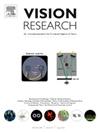了解视觉过敏的亚型:四个相关因素及其与卡迪夫过敏量表(CHYPS)的测量
IF 1.4
4区 心理学
Q4 NEUROSCIENCES
引用次数: 0
摘要
主观视觉敏感或不适已在许多独立的文献中报道,包括广泛的视觉触发(例如,重复模式,强光,运动,闪烁),跨越广泛的神经学,精神病学,心理健康,发育条件和神经多样性领域(例如,偏头痛,创伤性脑损伤,功能性神经障碍,PPPD, PTSD,焦虑,抑郁,厌食症,强迫症,自闭症,ADHD,阅读障碍,运动障碍,联觉)。为了将跨学科的研究结合起来,并在机制理解方面取得进展,我们的目标是提供一个明确的答案,以确定是否存在不同的视觉超敏反应亚型(因素)。在研究1中,我们从大型定性数据集(n = 765)、现有文献、问卷和参与者反馈中迭代生成问题。我们发现四个理论上一致的因素在五个队列(n = 349、517、349、417、797和1817)中得到了重复。这些因素是:亮度(例如,阳光),重复模式(例如,条纹),频闪(例如,闪烁,屏幕运动)和强烈的视觉环境(例如,超市,交通)。还有一个普遍的因素。在此基础上,我们制作了一份新颖的20项问卷(卡迪夫超敏反应量表,CHYPS),具有良好的信度(α >;0.8, ω >;0.8)和收敛效度(与其他视觉量表的相关性r >;0.6)。我们将讨论这些因素如何与超敏反应的因果理论相关。本文章由计算机程序翻译,如有差异,请以英文原文为准。

Understanding the subtypes of visual hypersensitivity: Four coherent factors and their measurement with the Cardiff Hypersensitivity Scale (CHYPS)
Subjective visual sensitivity or discomfort has been reported in many separate literatures, and includes a wide range of visual triggers (e.g., repeating patterns, bright lights, motion, flicker) across a wide range of neurological, psychiatric, mental health, and developmental conditions and areas of neurodiversity (e.g., migraine, traumatic brain injury, functional neurological disorder, PPPD, PTSD, anxiety, depression, anorexia, OCD, autism, ADHD, dyslexia, dyspraxia, synaesthesia). To unite this research across disciplines and to allow progress in mechanistic understanding, we aimed to provide a definitive answer to whether there are different subtypes (factors) of visual hypersensitivity. In Study 1, we generated questions from a large qualitative dataset (n = 765), existing literatures, questionnaires, and iteratively from participant feedback. We found four theoretically coherent factors replicated across five cohorts (n’s = 349, 517, 349, 417, 797 and 1817). These factors were: brightness (e.g., sunlight), repeating patterns (e.g., stripes), strobing (e.g., flashing, screen motion), and intense visual environments (e.g., supermarkets, traffic). There was also a general factor. Based on this we produced a novel 20-item questionnaire (the Cardiff Hypersensitivity Scale, CHYPS), with good reliability (α > 0.8, ω > 0.8) and convergent validity (correlations with other visual scales r > 0.6). We discuss how these factors can be related to causal theories of hypersensitivity.
求助全文
通过发布文献求助,成功后即可免费获取论文全文。
去求助
来源期刊

Vision Research
医学-神经科学
CiteScore
3.70
自引率
16.70%
发文量
111
审稿时长
66 days
期刊介绍:
Vision Research is a journal devoted to the functional aspects of human, vertebrate and invertebrate vision and publishes experimental and observational studies, reviews, and theoretical and computational analyses. Vision Research also publishes clinical studies relevant to normal visual function and basic research relevant to visual dysfunction or its clinical investigation. Functional aspects of vision is interpreted broadly, ranging from molecular and cellular function to perception and behavior. Detailed descriptions are encouraged but enough introductory background should be included for non-specialists. Theoretical and computational papers should give a sense of order to the facts or point to new verifiable observations. Papers dealing with questions in the history of vision science should stress the development of ideas in the field.
 求助内容:
求助内容: 应助结果提醒方式:
应助结果提醒方式:


